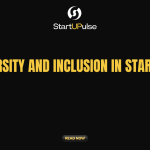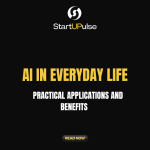
Artificial Intelligence (AI) is revolutionizing numerous aspects of our lives, but one of the most fascinating areas it impacts is language comprehension. From translating languages in real-time to crafting coherent and engaging written content, AI is making significant strides in understanding and using language. This article delves into how AI transforms language comprehension, exploring the underlying technology, practical applications, and prospects in detail.
Understanding AI and Language Comprehension
What is AI?
Artificial Intelligence, or AI, refers to computer systems designed to perform tasks that typically require human intelligence. These tasks include learning from experience, understanding natural language, recognizing patterns, and making decisions. AI achieves this through algorithms, which are sets of rules and calculations that enable machines to learn from data.
The Basics of Language Comprehension
Language comprehension involves the ability to understand and interpret spoken or written language. This includes recognizing words, understanding their meanings, and grasping the context in which they are used. Effective language comprehension requires a combination of syntax (sentence structure), semantics (meaning of words), and pragmatics (contextual usage).
How AI Learns About Language
1. Training on Large Datasets
AI systems, particularly those based on a branch called Natural Language Processing (NLP), learn about language through exposure to vast amounts of text data. This process is akin to reading an extensive library of books, articles, and other written material. For instance, OpenAI’s GPT-4, a state-of-the-art language model, has been trained on diverse internet text, enabling it to understand and generate human-like text.
2. Machine Learning Models
AI employs machine learning models to process and analyze language. These models use algorithms to identify patterns and relationships within the data. Two popular types of models in NLP are:
- Supervised Learning Models: These models are trained on labeled data, where each example in the training set is tagged with the correct answer. For language tasks, this might include pairs of sentences and their translations or sentences labeled with sentiment (positive, negative, neutral).
- Unsupervised Learning Models: These models work with unlabeled data and try to find hidden patterns or structures. For instance, they might learn to group similar words together or identify common themes in a text without explicit instructions.
3. Neural Networks
Neural networks are a key component of many modern AI systems. They are designed to mimic the human brain’s neural structure, consisting of layers of interconnected nodes (neurons). These networks can process and generate language by learning complex patterns and associations. For example, recurrent neural networks (RNNs) and transformers are specialized neural network architectures used for language tasks.
Applications of AI in Language Comprehension
1. Real-Time Translation
One of the most impactful applications of AI in language comprehension is real-time translation. AI-powered translation tools, such as Google Translate and DeepL, can instantly translate text and speech between numerous languages. These tools leverage advanced machine learning models to provide accurate translations, helping break down language barriers in both personal and professional contexts.
Example: Travel and Communication
Imagine you are traveling to a country where you don’t speak the local language. With a translation app on your phone, you can instantly translate signs, menus, and conversations. This capability not only makes travel more enjoyable but also facilitates smoother interactions in multicultural environments.
2. Content Creation and Editing
AI is increasingly used to assist with content creation and editing. Writing assistants, like Grammarly and Hemingway, use AI to analyze text for grammar, style, and clarity. They can suggest improvements, correct errors, and even help with structuring arguments.
Example: Enhancing Writing Skills
Students and professionals alike benefit from AI-powered writing tools. For example, a student drafting an essay can use an AI editor to refine their language, ensuring that their ideas are expressed clearly and effectively. These tools also provide feedback on style and tone, helping writers develop their skills.
3. Speech Recognition and Synthesis
Speech recognition systems, such as those used by virtual assistants (e.g., Siri, Alexa), convert spoken language into text. These systems use AI to understand and transcribe human speech, enabling users to interact with devices through voice commands.
Conversely, speech synthesis technology generates spoken language from text. This is used in applications like text-to-speech (TTS) systems, which can read out written content. Both technologies rely on advanced AI models to produce natural-sounding speech and accurately recognize various accents and speech patterns.
Example: Accessibility for the Visually Impaired
For individuals with visual impairments, speech synthesis technology can read out books, articles, and other written content. This enhances accessibility and ensures that visually impaired individuals can engage with written material just like sighted individuals.
4. Language Learning
AI is transforming language learning through interactive apps and platforms. Language learning apps, such as Duolingo and Babbel, use AI to personalize lessons and adapt to each learner’s progress. These platforms employ gamification techniques to make learning engaging and effective.
Example: Personalized Learning Experience
AI-driven language apps can tailor exercises and quizzes based on your strengths and weaknesses. If you struggle with certain grammar rules or vocabulary, the app can provide additional practice and explanations, helping you improve at your own pace.
Challenges and Limitations
While AI has made significant strides in language comprehension, several challenges remain:
1. Contextual Understanding
AI models sometimes struggle with understanding the context in which language is used. They might misinterpret ambiguous sentences or fail to grasp subtle nuances. For example, AI might struggle with idiomatic expressions or cultural references that are not explicitly defined in the text.
2. Bias and Fairness
AI systems can inadvertently perpetuate biases present in the training data. For instance, if an AI model is trained on biased or unrepresentative data, it may produce biased or unfair outcomes. Addressing these biases is crucial for ensuring that AI tools are equitable and reliable.
3. Handling Low-Resource Languages
While AI excels with widely spoken languages, it often struggles with languages that have limited digital resources. For example, AI translation tools might not perform as well with less common languages or dialects due to a lack of sufficient training data.
The Future of AI in Language Comprehension
1. Advancements in Deep Learning
Future developments in deep learning, a subset of machine learning, will likely enhance AI’s ability to understand and generate language. Advances in neural network architectures, such as transformers, are expected to improve the accuracy and coherence of language models.
2. Greater Personalization
As AI continues to evolve, we can expect even greater personalization in language tools. AI systems will become better at tailoring content and recommendations based on individual preferences, learning styles, and needs.
3. Cross-Language Communication
AI has the potential to enable seamless cross-language communication by providing real-time translation and interpretation services. This could facilitate global collaboration and understanding, breaking down language barriers in international settings.
Conclusion
Artificial Intelligence is fundamentally transforming how we comprehend and use language. From translating languages and assisting with writing to enhancing accessibility and supporting language learning, AI is making language-related tasks more efficient and accessible. While challenges remain, ongoing advancements in AI technology promise to further improve language comprehension, making communication and understanding across languages more seamless and effective. As AI continues to develop, its impact on language comprehension will undoubtedly expand, offering new opportunities for connection and collaboration in our increasingly globalized world.


















